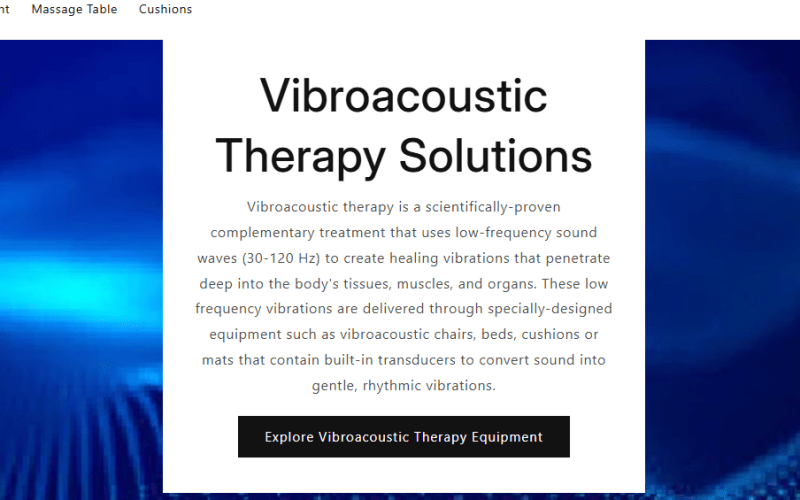Introduction
In today’s fast-paced world, stress has quietly become one of the most common health disruptors. People try everything yoga, deep breathing, aromatherapy, mindfulness—but one approach that’s been steadily gaining attention for its unique effectiveness is vibrational sound therapy. It combines two powerful elements sound and vibration—to create a deep physical and mental relaxation response that many describe as “instant calm.”
This article explores how sound frequencies influence the human body, why this form of therapy feels so restorative, and how you can experience its benefits even from home.
What Is Vibrational Sound Therapy?
At its core, vibrational sound therapy uses low-frequency vibrations generated by sound to stimulate the body on a cellular level. Unlike traditional music therapy which focuses primarily on the emotional impact of sound—this method allows sound waves to be physically felt through the body.
When sound frequencies travel through the skin, muscles, and bones, they create micro-vibrations that gently massage the cells. This helps improve circulation, reduce muscle tension, and support the body’s natural healing mechanisms. Think of it as a full-body sound bath—one that works both physically and energetically.
How Sound Affects the Body
Sound isn’t just something we hear; it’s energy that moves through matter. Every organ and tissue in the body has its own natural frequency, and when those frequencies are out of balance—due to stress, fatigue, or emotional strain—it can lead to discomfort or even illness over time.
Vibrational sound therapy helps restore that balance. The gentle waves penetrate deeply, encouraging the body to “retune” itself. This process activates the parasympathetic nervous system, which is responsible for rest and recovery. As a result, heart rate slows down, muscles loosen, and the mind shifts into a calmer, clearer state.
It’s no surprise that many users report better sleep, improved focus, and a noticeable reduction in anxiety after just a few sessions.
The Science Behind the Calm
Research into vibroacoustic therapy and similar modalities suggests that low-frequency sound (typically between 30–120 Hz) has measurable physiological effects. Studies have shown improvements in blood flow, pain relief, and reduced muscle stiffness in people using sound-based vibration devices.
But beyond measurable outcomes, the subjective experience is just as powerful. Many people describe a “floating” sensation during sessions a feeling of lightness or disconnection from stress. That’s because the combination of sound and vibration helps the brain enter alpha and theta states, the same brainwave patterns associated with meditation and deep relaxation.
In essence, the therapy acts like a natural reset button for both mind and body.
Why People Are Turning to Sound for Healing
Modern life has made it harder to disconnect. Even moments of rest are often filled with background noise or digital distractions. What makes vibrational sound therapy so effective is that it encourages the opposite it invites you to feel sound instead of just hearing it.
For some, this becomes a form of mindfulness practice; for others, it’s purely physical relief from tension or chronic pain. Wellness practitioners, spas, and even physical therapists are beginning to integrate sound-based tools into their sessions, recognizing how well it complements other holistic treatments like massage or yoga.
How to Experience Vibrational Sound Therapy at Home
You don’t need to visit a clinic to experience the benefits. With today’s technology, there are at-home solutions like sound cushions, chairs, and beds designed specifically to deliver therapeutic vibrations safely and effectively.
These devices convert audio frequencies—often soothing tones or ambient music—into gentle vibrations that flow through your body. You simply recline, relax, and let the waves of sound do their work.
If you’re new to this, start with short sessions of 15–20 minutes. Choose a quiet environment, use comfortable headphones or speakers if available, and focus on your breath as you tune into the vibrations. Many users find it quickly becomes their favorite daily stress relief ritual.
Real Benefits People Report
While results vary, there are some commonly shared experiences among those who practice regularly:
- Deeper relaxation and improved sleep quality
- Relief from muscle tension and stiffness
- Reduced anxiety and emotional stress
- Better concentration and mental clarity
- Enhanced overall sense of balance and well-being
These aren’t just fleeting sensations they often build over time as your body becomes more responsive to the sound frequencies.
Integrating Sound Healing into a Wellness Routine
To get the most out of vibrational sound therapy, consistency is key. Just as regular exercise strengthens the body, regular sound sessions help regulate your nervous system. Try pairing it with other mindful habits: meditation, stretching, or breathing exercises.
You can also use it as a recovery tool after workouts or a calming routine before bed. What matters most is giving yourself space to fully relax something our bodies rarely get in today’s overstimulated world.
Final Thoughts
Sound has been used for centuries as a healing tool, from ancient chanting to modern music therapy. What makes vibrational sound therapy unique is its ability to merge traditional wisdom with modern technology. By allowing sound to move through the body, it supports both physical and emotional recovery in a natural, non-invasive way.
If you’ve been searching for a method to ease stress, release tension, and reconnect with yourself, exploring this therapy might just be the soothing experience your body’s been waiting for.











